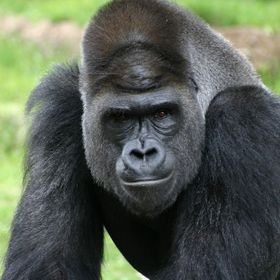

Stretchc
FollowCloseup of a honeybee coming in to land on a purple, Thistle flower to pollenate it.
Closeup of a honeybee coming in to land on a purple, Thistle flower to pollenate it.
Read less
Read less
Views
616
Top Ranks
Same photographer See allBehind The Lens
Behind The Lens
Location
I took this photo at a city park in Carrollton, Texas, which is just northeast of Dallas. There was a trail through some trees adjacent to a creek, and on the trail was a cluster of Thistles in full bloom. This honeybee was one of a number of honeybees and other insects that were buzzing around the flowers and pollenating them.Time
I got to the park around noon and started walking down through the trees shortly after I arrived. It's more of a greenbelt, and not a traditional park with a playground, so it's a more natural setting. I put my camera on my monopod and started following some insects until I came across the cluster of flowers and all of the insects buzzing around them. The date was May 17, 2014, and I took this particular photo at 1:01 pm that afternoon.Lighting
It was a beautiful, cloudless, sunny afternoon, so all the colors were bright and vibrant in the full sunlight. Since it was shortly after noon, the sun was high in the sky producing short, crisp shadows and illuminating the tops of the flowers to create bursts of color.Equipment
I took the photo using a Nikon D3200 with the 18-55 mm kit lens that came with it. I had the ISO bumped up to 1600 so I could shoot at higher speeds, and also had my camera on a monopod to stabilize everything. This particular shot was taken at 55mm with an f-stop of 5.7 and a speed of 1/2000 of a second. It was taken from about 3 feet from the flower and bee using only the natural sunlight.Inspiration
I was watching several insects buzzing around and noticed this little guy concentrating on the flower in the photo. I focused in on the flower and took several shots as he flew in and out and really liked how this particular shot captured him as he's approaching the flower in preparation for landing.Editing
This photo was one of those that came out of the camera needing very little adjustments. I raised the contrast a tiny bit, increased the brightness by just a bit, and added just a tiny bit more to the colors using a levels adjustment in PhotoShop.In my camera bag
Along with my Nikon D3200, I pack the 18-55 mm Nikkor lens that came with it and a Nikkor AF-S VR 70-300/4.5-5.6G IF-ED lens that I recently added. I also carry a monopod, a polarizing filter, lens cleaning kit, a speed light, extra batteries and memory cards, and water if I plan on being out a while. I carry my tripod frequently, but didn't have it this time due to limited space, and also carry a white/gray card in case I encounter a tricky light situation and want to use a custom white balance to ensure my colors are good.Feedback
The most important things when taking nature shots are patience and persistence. I've gone out and spent several hours wandering around an area without getting a single shot that really stood out. Take your time and look for areas that offer promise, then go back to them at different times of the day to see how the area looks in different light and what level of activity you find among the wildlife. Take some time to learn about the flora and fauna you plan on photographing. When are the animals active, do they need to be near water, what do they eat, are they nocturnal or diurnal, etc. If you're wanting plant photos, or landscapes full of color, learn when the trees and flowers bloom or when the colors change in the fall. The more you know about your subjects, the better your chances of being in the right place at the right time to get those beautiful shots. Of course, when dealing with nature, there is always a bit of luck involved, and the only way to increase your chances of getting lucky is to increase your time in the field shooting.


























